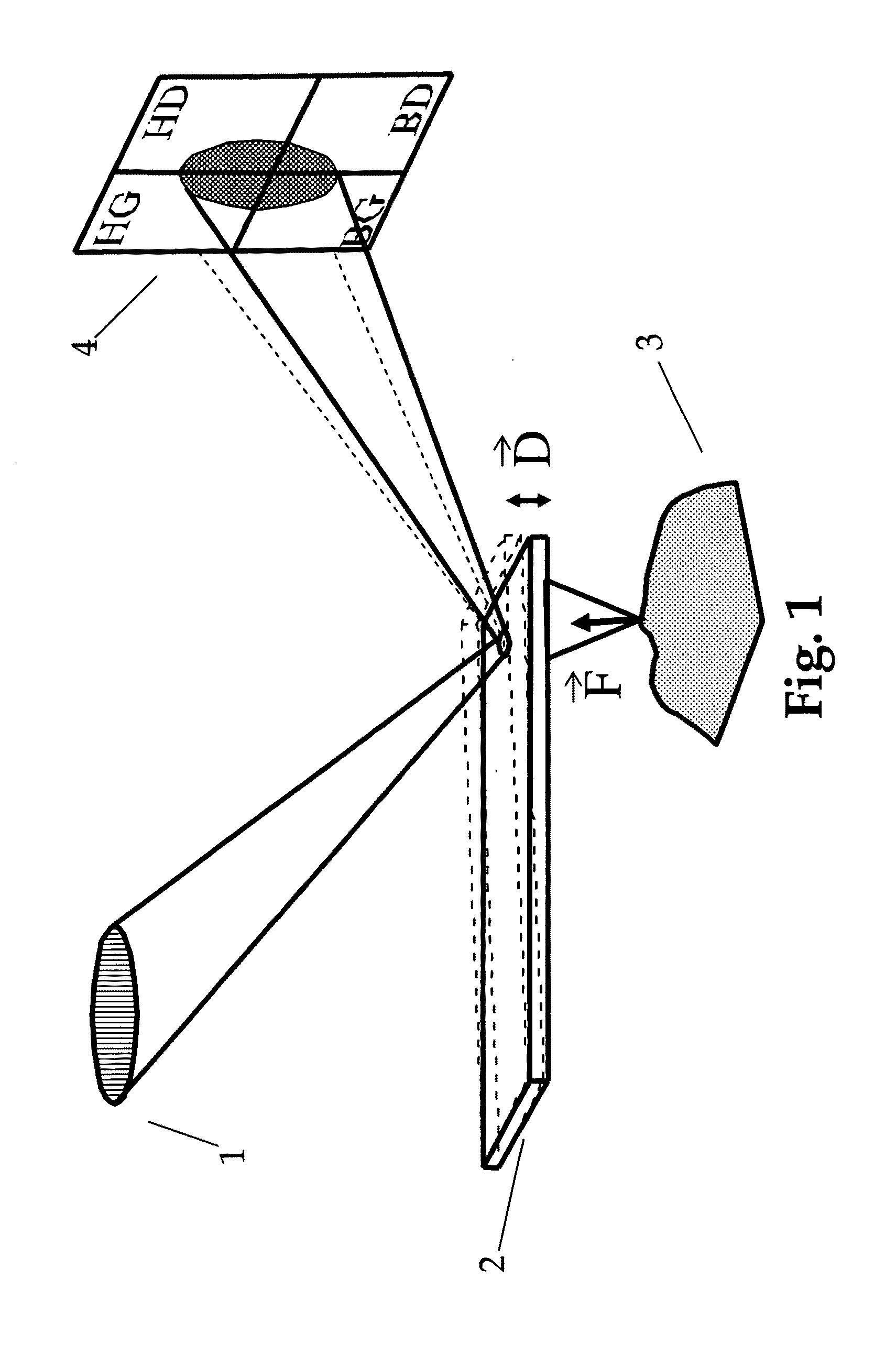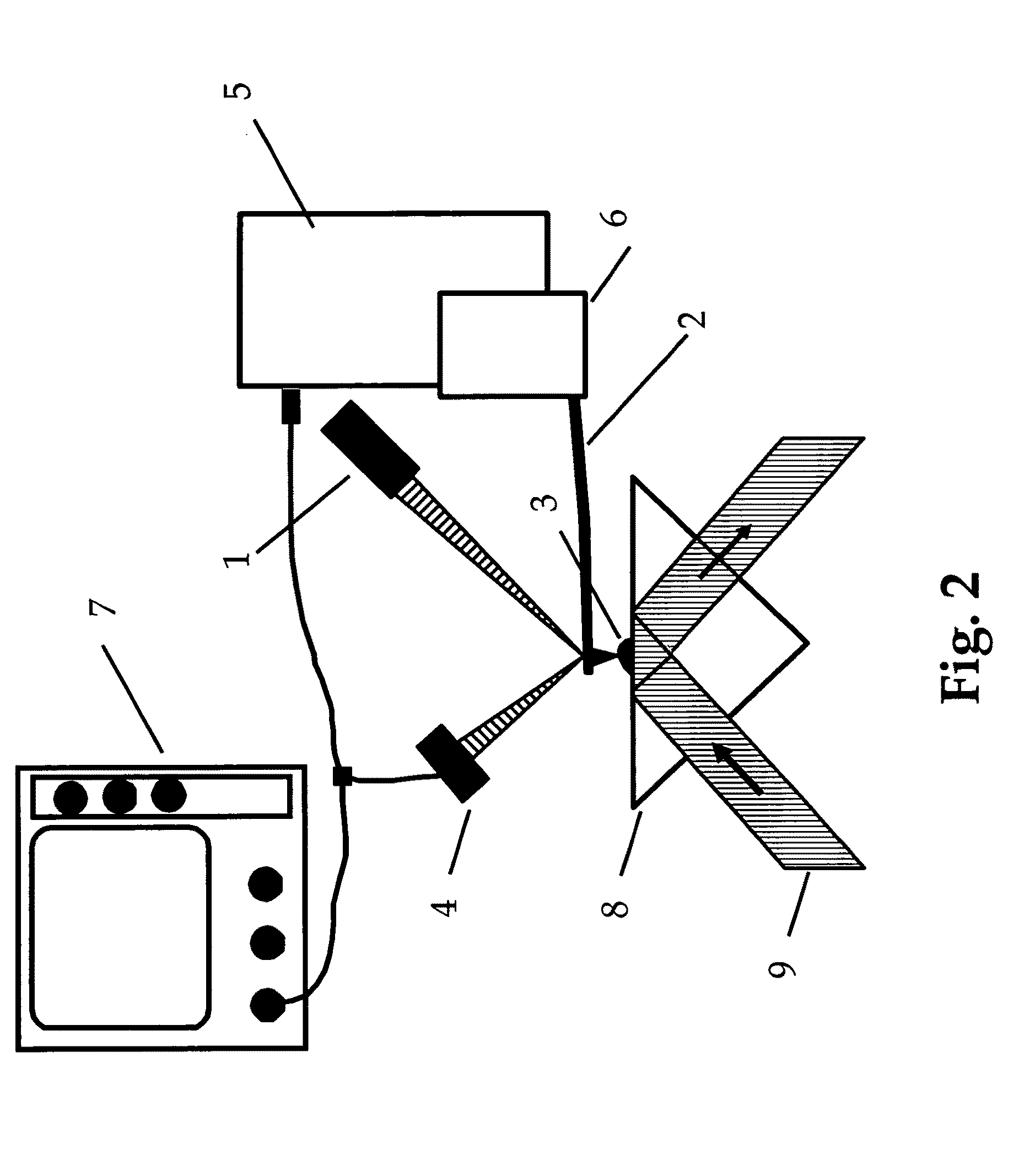High frequency deflection measurement of IR absorption
a high frequency deflection and absorption technology, applied in the field of high-localized infrared (ir) spectra, can solve the problems of insufficient optical power density and/or modulation rate, expensive and rare facilities, etc., and achieve the effect of suppressing background absorption sources, rapid and automated scanning, and convenient operation
- Summary
- Abstract
- Description
- Claims
- Application Information
AI Technical Summary
Benefits of technology
Problems solved by technology
Method used
Image
Examples
Embodiment Construction
Photo Thermal Induced Resonance (PTIR) Overview
[0050]Referring to FIG. 3, infrared radiation 9 is incident on a region of a sample 3. At a wavelength absorbed by the sample, the absorption will typically cause a local increase in temperature and a rapid thermal expansion of the sample 3. Probe 2, is arranged to interact with the sample and transducer a signal related to the IR energy in the region under the probe tip. By “interact” we mean to position the probe tip close enough to the sample such that a probe response can be detected in response to absorption of IR radiation. For example the interaction can be contact mode, intermittent contact or non-contact mode. An associated detector can be used to read one or more probe responses to the absorbed radiation. For example the induced probe response may be a probe deflection, a resonant oscillation of the probe, and / or a thermal response of the probe (e.g. temperature change). For probe deflection and / or resonant oscillation of the ...
PUM
 Login to View More
Login to View More Abstract
Description
Claims
Application Information
 Login to View More
Login to View More - R&D
- Intellectual Property
- Life Sciences
- Materials
- Tech Scout
- Unparalleled Data Quality
- Higher Quality Content
- 60% Fewer Hallucinations
Browse by: Latest US Patents, China's latest patents, Technical Efficacy Thesaurus, Application Domain, Technology Topic, Popular Technical Reports.
© 2025 PatSnap. All rights reserved.Legal|Privacy policy|Modern Slavery Act Transparency Statement|Sitemap|About US| Contact US: help@patsnap.com



